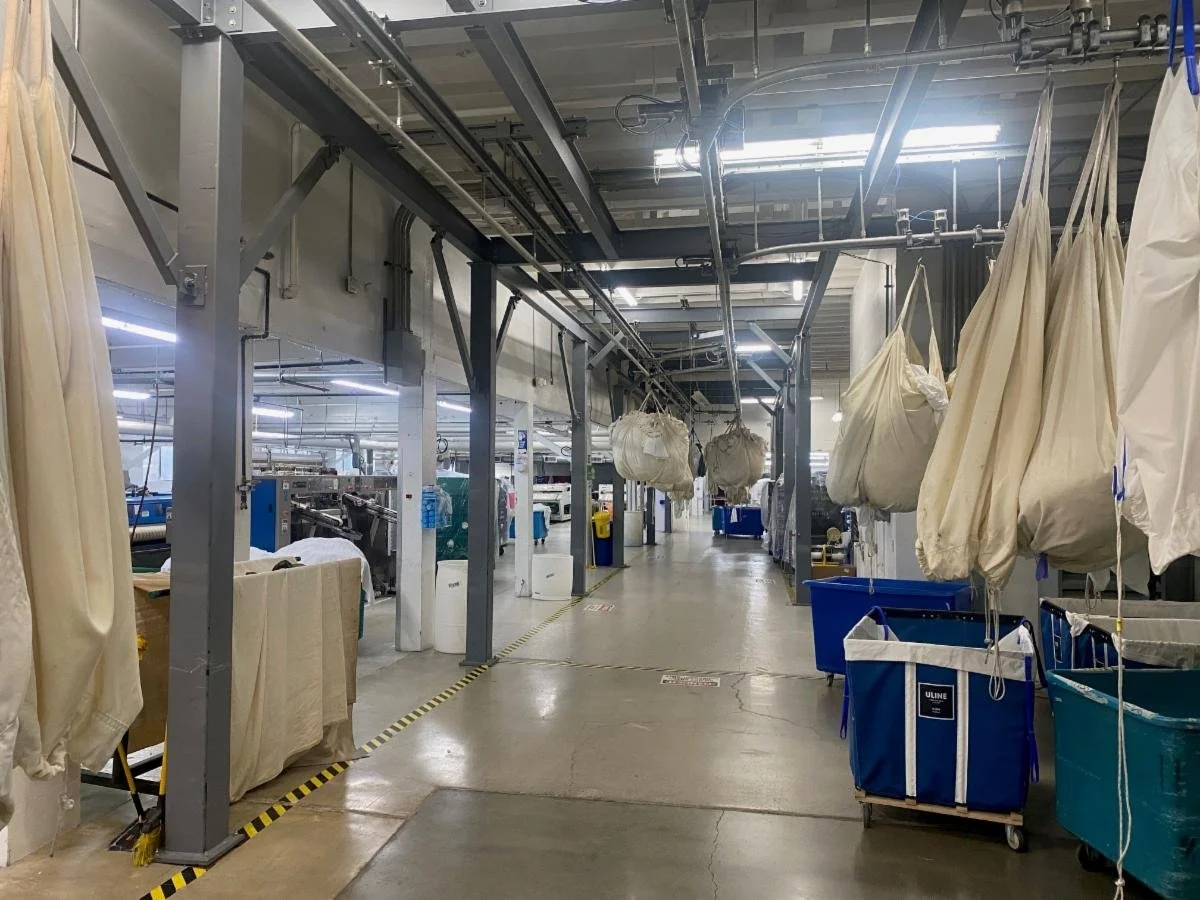It’s seven percent of your patients
Hi there, it’s Greg checking in again!
If you’ve been keeping up with our recent newsletters, you know we’ve been talking about just how critical healthcare textiles and textdevices are to patient safety.
In this newsletter, I’m diving into a report published by the World Health Organization (WHO) back in late November of last year on Infection Prevention and Control, which paints a sobering picture of the global burden of healthcare-associated infections (HAIs).
The numbers speak for themselves.
According to the WHO’s stats, in high-income countries, seven out of every 100 patients acquire at least one HAI during their hospital stay. It’s even worse for low-income countries with fewer resources, with 15 out of every 100 patients getting at least one.
As a consultant and laundry owner and operator, I’ve partnered with dozens of hospitals and serviced many more across the country, ensuring safe, high-quality linen for every patient and healthcare worker. And we all know that IPC plays a vital role in patient and staff safety, impacting every care interaction – especially for the most vulnerable in our communities.
Left unchecked, these infections could lead to nearly 3.5 million deaths every year up to 2050. To give you an idea of just how astonishing that is: that’s more than four times the number of deaths in 2021 caused by HIV, AIDs, and other sexually transmitted diseases combined – in the entire world.
This WHO report stresses that, for us to see any measurable change to these worrying stats, every country needs to prioritize programs focusing on, you guessed it, infection prevention and control (IPC). And, as WHO director general Dr Tedros Adhanom Ghebreyesus put it,
“The COVID-19 pandemic, as well as outbreaks of Ebola, Marburg and mpox are the most dramatic demonstrations of how pathogens can spread rapidly and be amplified in health care settings. But HAIs are a daily threat in every hospital and clinic, not only during epidemics and pandemics.”
A Day in the Life of a Hospital Towel
A hospital towel’s journey is more complex than it seems, passing through multiple hands and processes before it’s ready for patient use again. After a patient dries off – perhaps even after surgery – the used towel is collected, transported, and carefully processed to eliminate contaminants like Staph.
At the laundry facility, industrial washers use high heat, specialized chemicals, and automated systems to clean and disinfect towels effectively. Once processed, they’re securely packaged and transported back to the hospital, where proper handling and storage prevent recontamination. Any misstep – whether during transport, storage, or restocking – can compromise cleanliness, making each step in the cycle crucial. Understanding this process helps hospitals optimize their linen programs, reduce infection risks, and ensure that every towel returns to service safely and efficiently.
And that was just a single towel. Hospitals go through thousands of linens every day, and if you've been following our past newsletters, you know that handling is far more sophisticated and nuanced – especially when it comes to medical textiles and devices.
I literally take you through the journey of one hypothetical hospital towel – from patient use to collection, transport, industrial laundering, and back to service – deep-diving into the risks it faces at each step in one chapter of my soon-to-be-released book. If you want an early copy before its official launch, just reply “Hi” to this email, and I’ll add you to the list!
Why This Matters
The simple fact is that with strategic systems in place for IPC, we could together save a lot of people and a lot of money every year.
What’s positive to note from the report, though, is that since COVID, many countries are strengthening IPC programs and best practices. In fact, at the 77th World Health Assembly, WHO members adopted the first global IPC strategy with 2030 targets. The WHO is also actively supporting countries in achieving these goals.
Now, lastly, here’s a quick roundup of key stats from the report – so you don’t have to read the whole thing (though us nerds enjoy that kind of thing). 😉
1 in 31 hospital patients and 1 in 43 nursing home residents in the US has an HAI on any given day.
Some progress before COVID: HAI prevalence in US hospitals fell from 4.0% in 2011 to 3.2% in 2015.
COVID wiped out years of progress, driving sharp increases in infections:
Ventilator-associated events (VAE) rose by 35%
Central line-associated bloodstream infections (CLABSI) jumped by 24%
Hospital-onset MRSA infections increased by 15%
Drug-resistant infections are spreading fast:
26.1% of Pseudomonas aeruginosa infections resist imipenem
28.8% of Klebsiella pneumoniae infections resist ceftazidime
12.8% of Klebsiella pneumoniae infections resist imipenem
Candida auris, a deadly fungal infection, is rising at an alarming rate, with 2,377 infections and 5,754 colonizations reported in the US in 2022.
Final Thoughts
The WHO’s findings show just why the world needs better infection prevention strategies. But addressing these challenges takes more than general recommendations – it requires a clear understanding of the small, often overlooked details that make a big difference.
Until next time,
Greg
Compliance Shark


